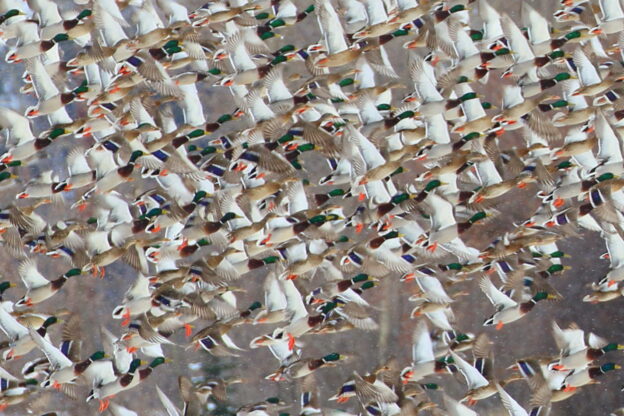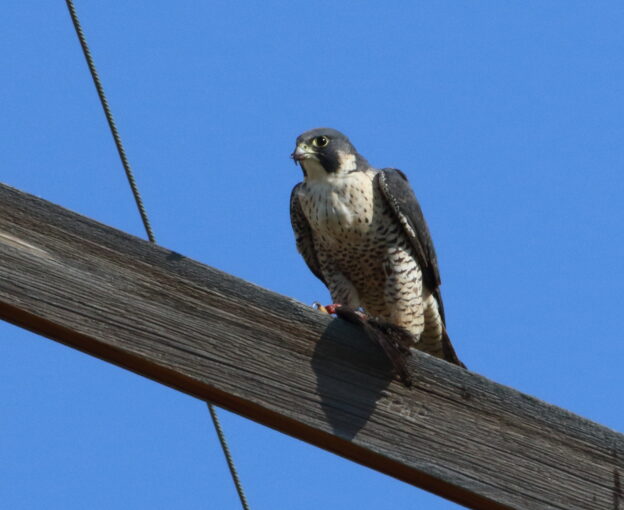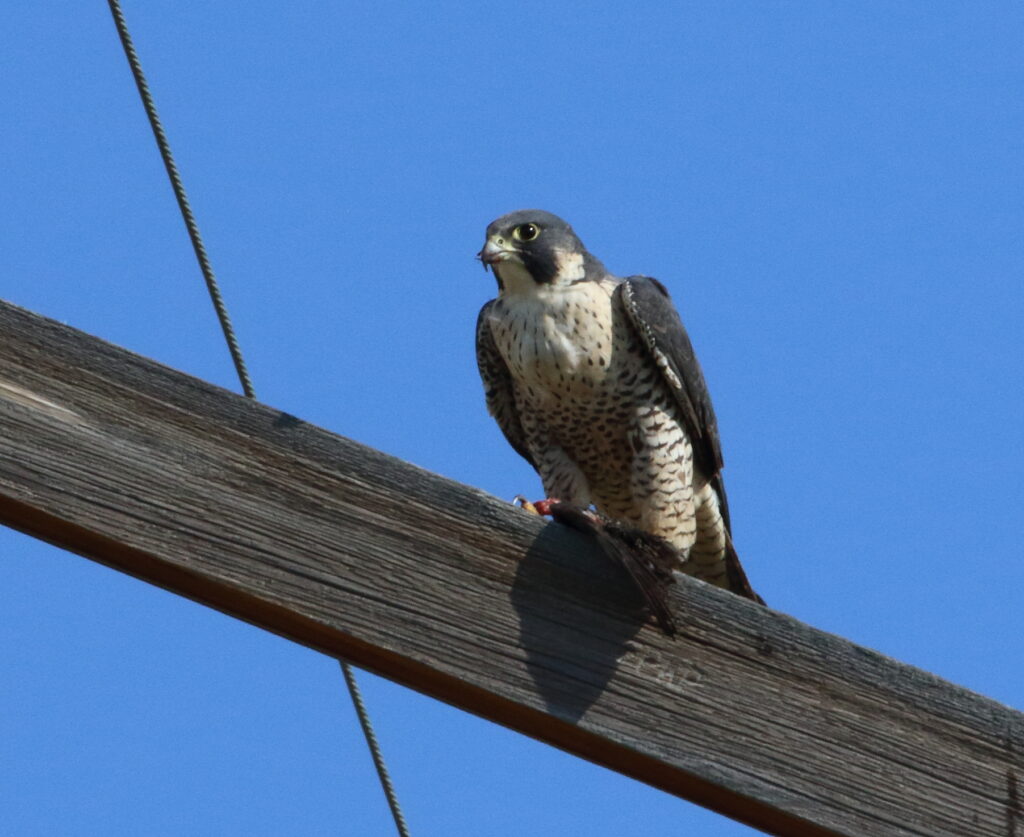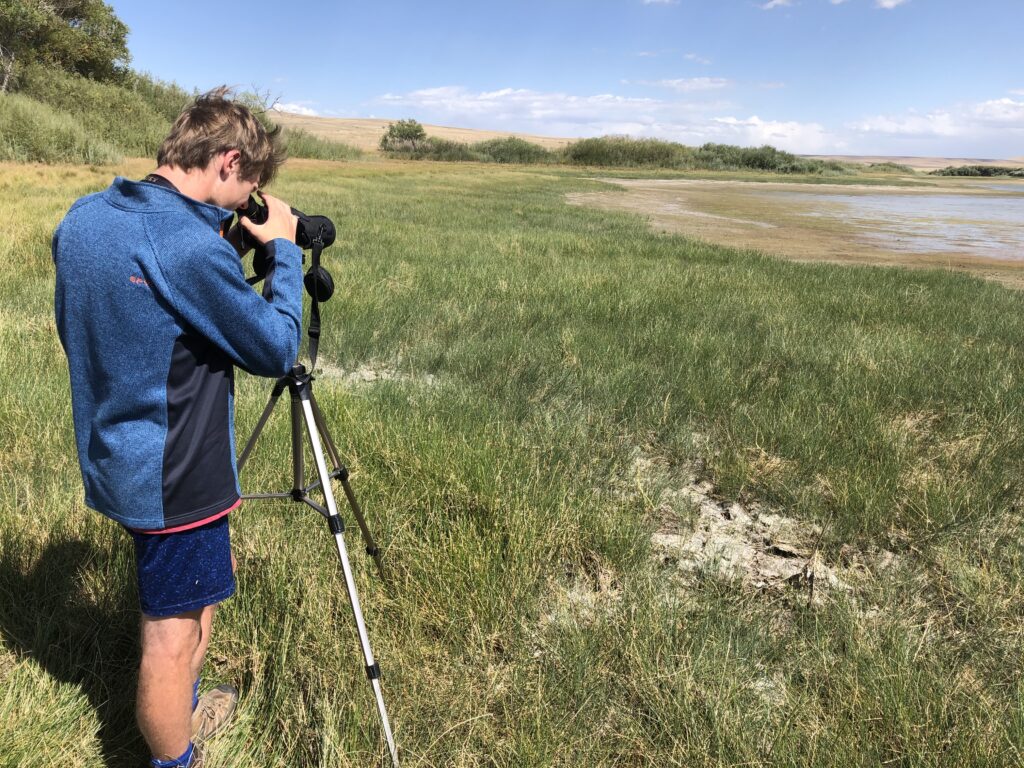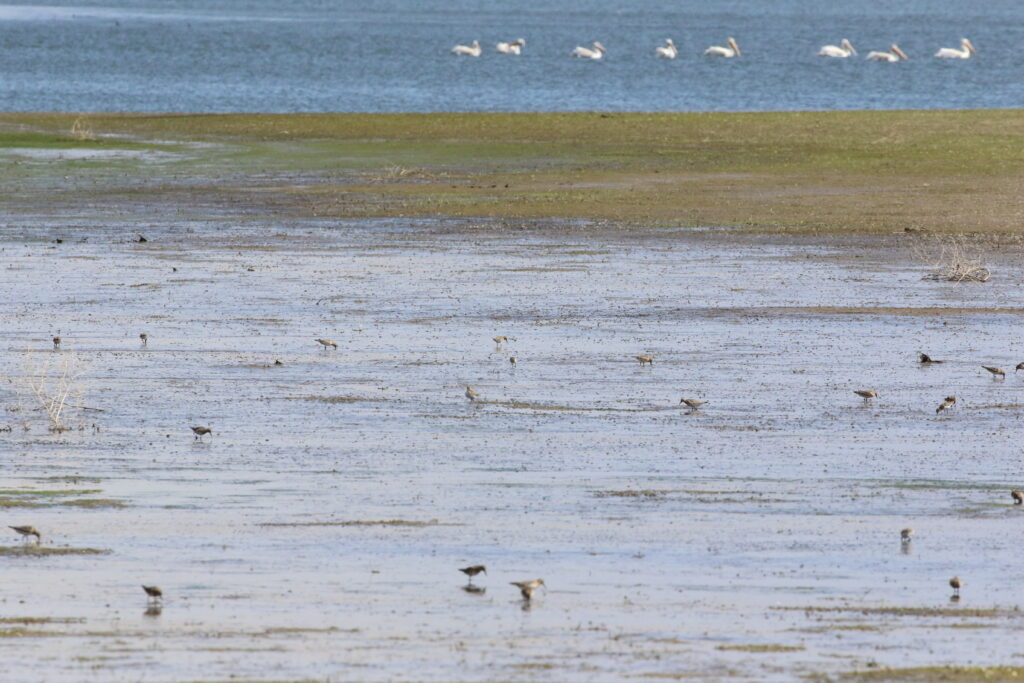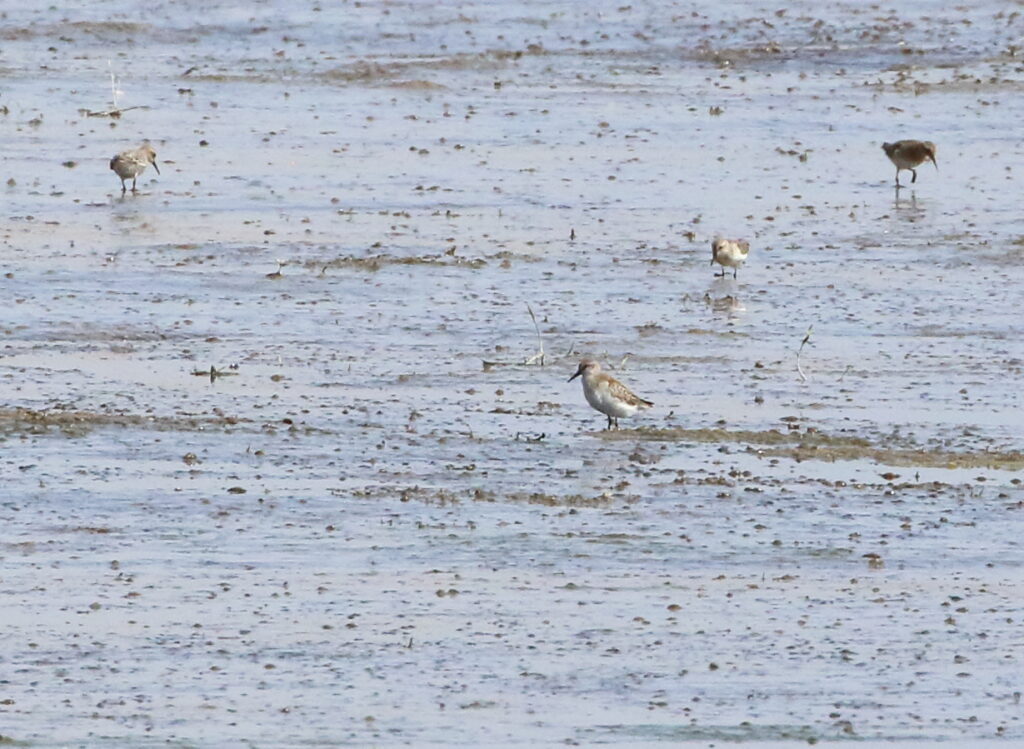Gamblers and fishermen are famous for being superstitious. Birders aren’t much better. Sure, we feed ourselves platitudes such as, “The more you get out, the more you’ll see,” but deep down, we know that the birding gods control our fates, and that our success depends on whether we’re deemed worthy. In our last post, I recounted how Braden and I spent six hours and two days looking for a Gyrfalcon near White Sulpher Springs, only to endure the gods’ wrath. Yesterday morning, when we set out on a quest for a Snowy Owl, we wondered if the gods would continue to scorn us, or whether we had proven ourselves humble and dedicated enough to curry their birdly favor.
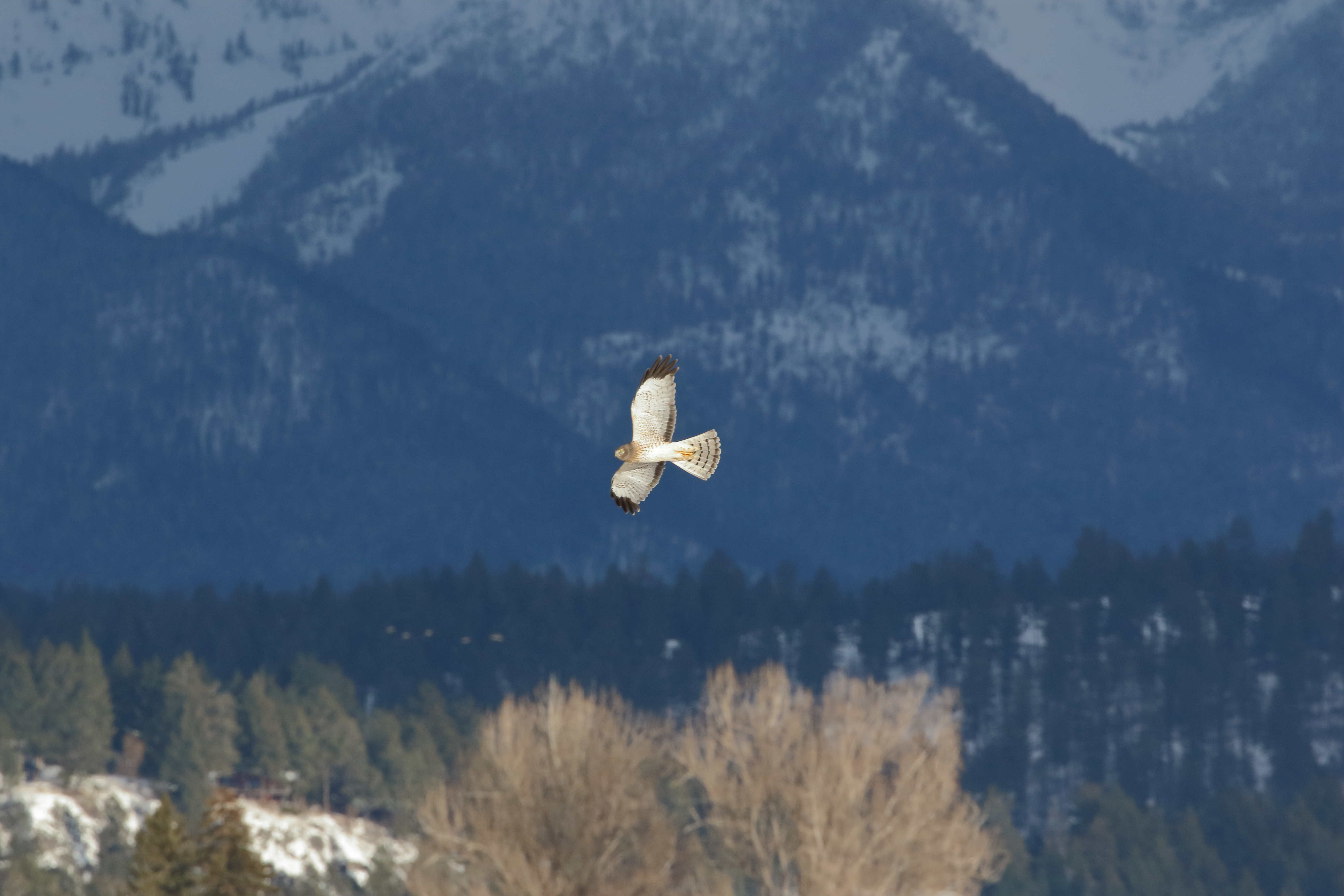
We left the house at 6:30 a.m. and by 7:30 were at Ninepipe National Widlife Refuge, where we hoped to score an elusive Year Bird, Short-eared Owl. We drove the dirt roads for more than an hour and saw more than a dozen Red-tailed Hawks, Rough-leggeds, Bald Eagles, Harriers—even a Merlin. No Short-eared Owl. “Ah, well,” I told Braden. “We’ll get ‘em next time.” Inside, though, I was thinking, “Oh, man. Is it going to be that kind of day? Again?”
Well, apparently, it was. Reaching the Snowy Owl neighborhood near Kalispell, we again drove for more than an hour without so much of a glimpse of a white owl. By now, I realized that the BGs must be really pissed at us. We decided to chase some other birds and come back later, however, and did score our first Gray-crowned Rosy-finches in three years at the Kalispell dump—while getting bawled out by the “dump lady” for our efforts. We also found a White-winged Crossbill among a flock of Red Crossbills feeding on some nearby spruce trees. Nice, but not a Snowy Owl.
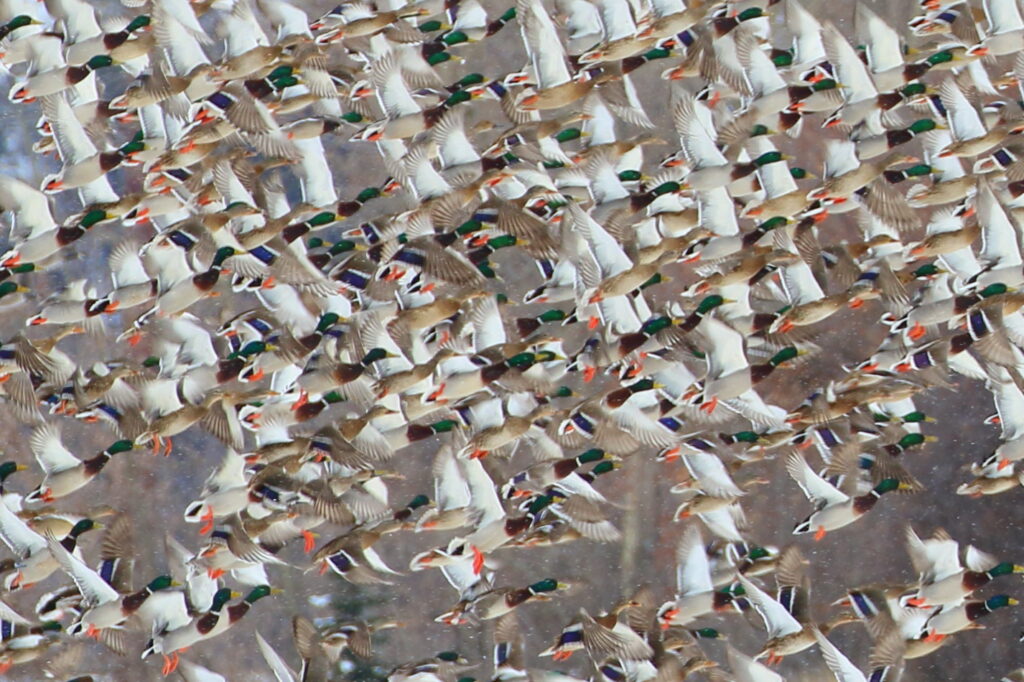
After a lunch at Panera Bread (hey, more chicken in my Napa Almond Chicken Salad Sandwich, please!), including our favorite kitchen sink cookies, we hit an amazing field full of about 5,000 Mallards. Stunning! Then, we returned to the Snowy Owl site, where we encountered several other birders. None of them had had any success, either, but while we were commiserating, a photographer named Dick Walker introduced himself and asked, “Are you the father-son birding team?” We’d never been called that, but I answered “Yes,” and he started talking about the Mallard spot we’d just left. He showed us photos of Lapland Longspurs and, most exciting, a Gyrfalcon he had seen only thirty minutes before!
We tore back to the place, forever hopeful. No longspurs. No falcon. After fifteen minutes, though, a massive group of a thousand Mallards lifted off and seconds later, a sleek, jet-fighter shape zoomed across our field of vision. “It’s the Gyr!” Braden shouted.
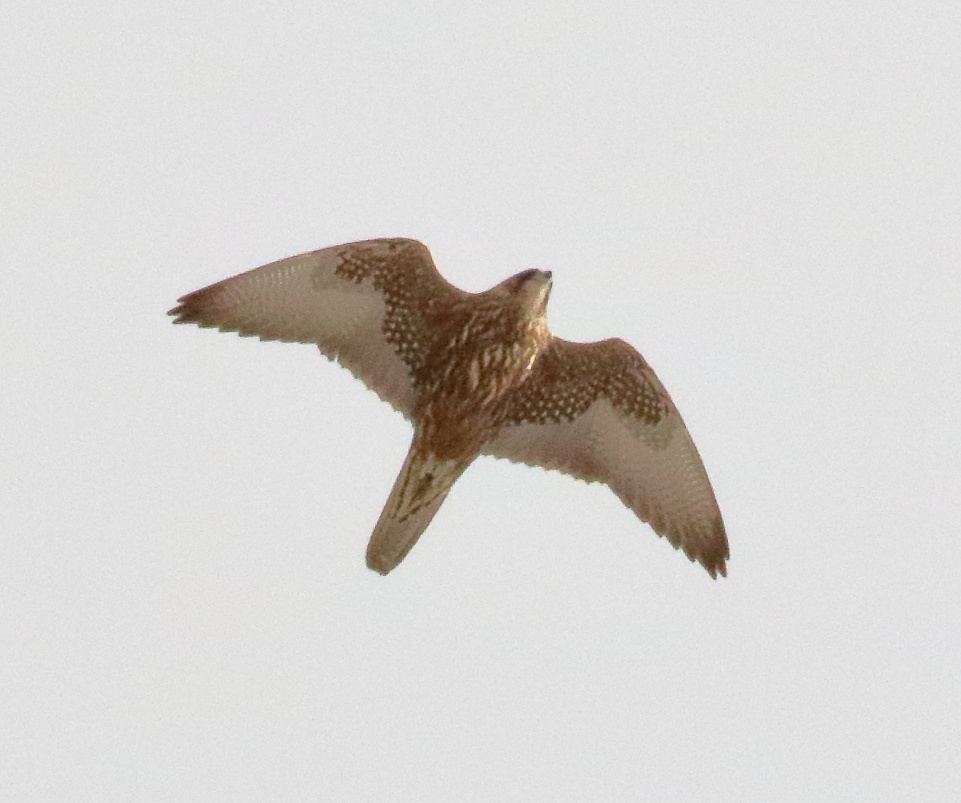
Indeed it was. We quickly lost it in the distance and decided to race over to another road closer to where it disappeared. We got there and jumped out of the car just as the amazing raptor reappeared, obviously enjoying terrifying the thousands of ducks and geese swirling around it. While Braden set up our scope, I tracked the bird with my binoculars. It seemed to toy with a large group of ducks, but its madness had some method as more and more Mallards peeled off until only two remained. As I watched, breathless, the Gyr hit one of them and took it to the ground. “It got a duck!” I shouted.

Its victory was temporary. Within thirty seconds, a much larger brown shape swooped in—an immature Bald Eagle. It effortlessly drove the Gyr from its kill, eliciting shouts of outrage from yours truly. We continued watching the amazing creature for another fifteen minutes before it vanished again. Then, after another unsuccessful Snowy Owl circuit, we began the long drive home. As we headed south along Flathead Lake, I thought about BB King, who often talked about paying his dues, and asked myself why we’d seen a Gyrfalcon here, in the last place we’d ever expected. “Maybe our efforts in White Sulphur Springs satisfied the birding gods after all,” I speculated. “Or maybe we just had to pay our birding dues to see the Gyr.” Either way, it had been one of the best birding days Braden and I had ever experienced—even without the Snowy Owl.

